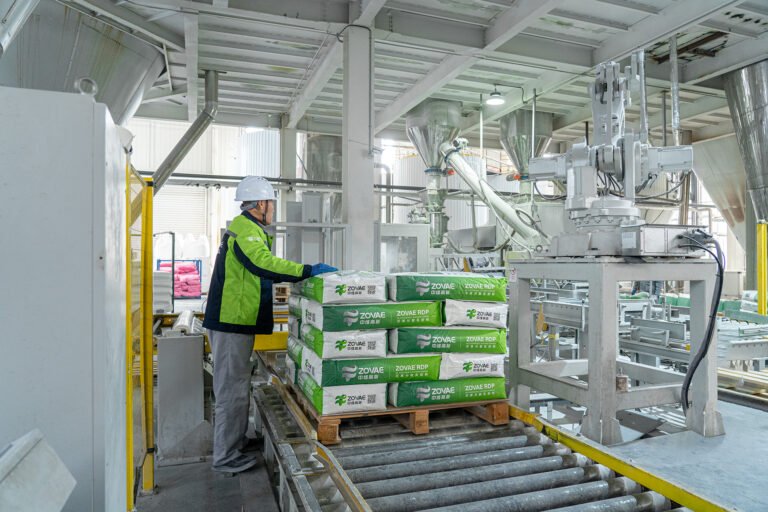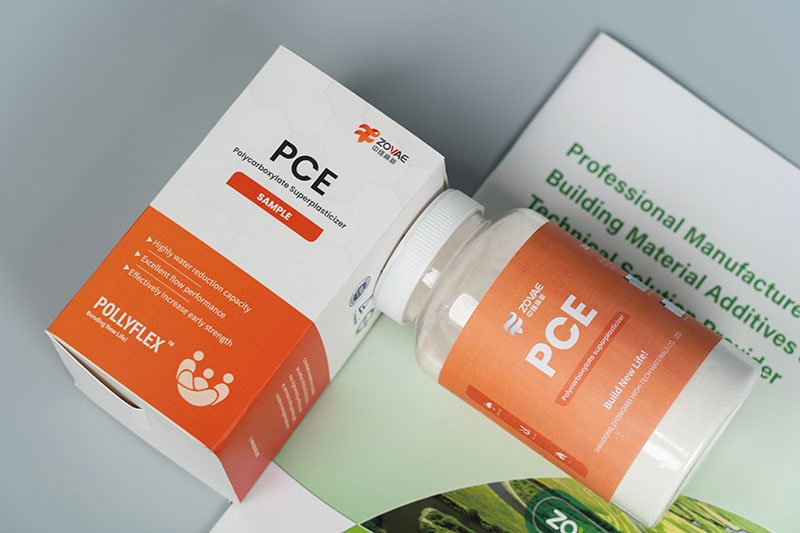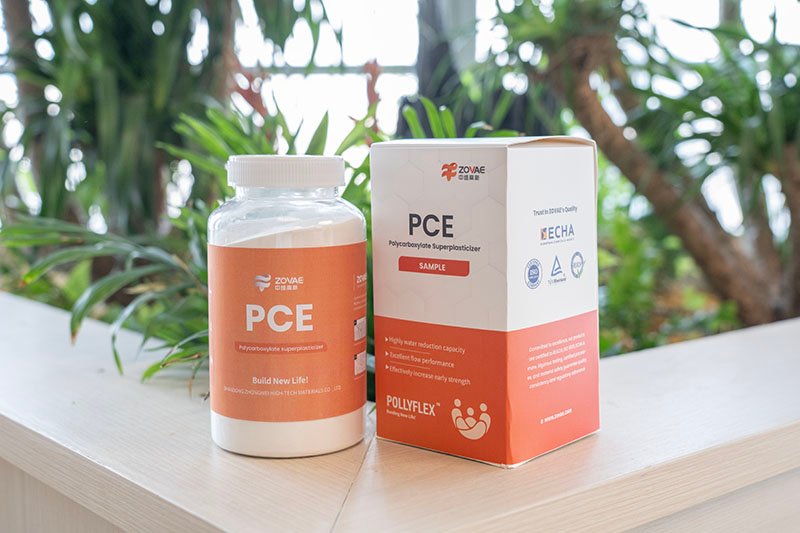
Merry Christmas ZOVAE
Wishing You Joy & Prosperity
Polycarboxylate superplasticizer, often abbreviated as PCE or referred to as PCE-based superplasticizer, stands as a cutting-edge chemical admixture widely employed in the construction industry to optimize the flow and workability of concrete. Belonging to the sophisticated family of superplasticizers, these additives are engineered to significantly enhance the fluidity of concrete mixes without compromising their strength or long-term durability. PCE represents a pivotal innovation in concrete technology, addressing the growing demand for high-performance materials in modern infrastructure projects.
In today’s construction landscape, where efficiency, sustainability, and structural integrity are paramount, PCE plays an indispensable role. It enables the production of concrete that can adapt to complex designs, endure harsh environmental conditions, and reduce resource consumption through optimized mix designs. Unlike earlier generations of superplasticizers, such as sulfonated naphthalene formaldehyde (SNF) or sulfonated melamine formaldehyde (SMF), PCE offers superior performance, particularly in terms of dosage efficiency and prolonged workability. This makes it a preferred choice for engineers and architects tackling ambitious projects ranging from towering skyscrapers to expansive bridges.
This article delves deep into the realm of polycarboxylate superplasticizers, exploring their chemical makeup, functionality, applications, and the challenges associated with their use. By understanding PCE’s multifaceted contributions, stakeholders in the construction field can better harness its potential to revolutionize building practices while addressing environmental and economic concerns.
The journey of concrete admixtures dates back several decades, driven by the need to improve the performance of concrete beyond what traditional materials could achieve. In the mid-20th century, the introduction of plasticizers marked a significant step forward, allowing for better workability with reduced water content. However, it wasn’t until the 1960s and 1970s that superplasticizers, a more advanced category of admixtures, emerged to meet the demands of high-strength and high-performance concrete.
The first-generation superplasticizers, primarily based on sulfonated naphthalene formaldehyde (SNF) and sulfonated melamine formaldehyde (SMF), offered notable improvements in concrete fluidity. Yet, they came with limitations such as rapid slump loss—a quick reduction in workability over time—and the need for higher dosages to achieve desired effects. These drawbacks prompted researchers to seek more efficient alternatives, leading to the development of polycarboxylate superplasticizers in the late 20th century, particularly during the 1980s in Japan and later across Europe and North America.
PCE marked a breakthrough due to its unique molecular structure, which provided enhanced dispersion of cement particles and prolonged workability. Unlike its predecessors, PCE required lower dosages to achieve superior flow characteristics, making it more cost-effective in the long run. Its ability to maintain concrete fluidity over extended periods also revolutionized construction practices, particularly in hot climates or projects requiring long transportation times. Today, PCE stands as a cornerstone of modern concrete technology, continually evolving to address specific construction challenges and sustainability goals.
At the heart of polycarboxylate superplasticizer’s remarkable performance lies its intricate chemical composition. PCE is a polymer-based admixture characterized by a comb-like molecular structure, consisting of a backbone chain with side chains (often referred to as “teeth” of the comb) that play a critical role in its functionality. The backbone is typically composed of polycarboxylic acid or its derivatives, while the side chains are made of polyethylene oxide (PEO) or similar hydrophilic groups.
The carboxylic groups along the backbone are responsible for adsorbing onto the surface of cement particles, imparting a negative charge that promotes electrostatic repulsion between particles. Meanwhile, the long side chains create steric hindrance, physically preventing the particles from agglomerating. This dual mechanism—electrostatic repulsion combined with steric stabilization—distinguishes PCE from earlier superplasticizers, which relied primarily on electrostatic effects alone.
Manufacturers can tailor PCE formulations by adjusting the length and density of side chains or modifying the backbone structure to suit specific concrete requirements. For instance, PCE variants designed for self-consolidating concrete (SCC) may have longer side chains to maximize fluidity, while those for high-early-strength concrete might prioritize rapid dispersion. Additives such as defoamers or retarders might also be incorporated to fine-tune performance. Understanding these compositional nuances allows engineers to select the most appropriate PCE type for their project, optimizing both cost and effectiveness.
The efficacy of polycarboxylate superplasticizer in enhancing concrete workability stems from its sophisticated interaction with cement particles during mixing. When PCE is added to a concrete mix, its carboxylic groups adsorb onto the positively charged surfaces of cement particles, such as calcium silicate hydrates, creating a negatively charged layer. This charge induces electrostatic repulsion, preventing the particles from clumping together and thus improving dispersion.
Beyond this electrostatic effect, the extended side chains of PCE molecules protrude into the surrounding water, forming a physical barrier that further inhibits particle agglomeration through steric hindrance. This dual-action mechanism ensures a more uniform distribution of cement particles within the mix, allowing for greater fluidity even at lower water-cement ratios. As a result, concrete incorporating PCE can achieve high workability without the need for excess water, which would otherwise weaken the final product.
Moreover, PCE’s ability to maintain dispersion over time helps mitigate slump loss, a common issue with older superplasticizers. This sustained workability is particularly beneficial in scenarios where concrete must be transported over long distances or placed under challenging conditions. By reducing the water content required for a workable mix, PCE also contributes to higher compressive strength and improved durability, as less water translates to fewer voids and a denser concrete matrix. This intricate balance of chemical and physical effects underscores PCE’s role as a transformative admixture in modern concrete formulations.
Polycarboxylate superplasticizer has found widespread application across diverse construction projects, thanks to its versatility and superior performance. One of its primary uses is in the production of high-strength concrete (HSC), where low water-cement ratios are critical to achieving exceptional compressive strength. PCE enables the creation of such mixes by ensuring adequate workability despite minimal water content, making it ideal for structures like high-rise buildings and heavy-duty pavements.
Another significant application lies in self-consolidating concrete (SCC), a highly flowable concrete type that can spread into place under its own weight without mechanical vibration. PCE is instrumental in SCC formulations, providing the necessary fluidity to fill complex formwork and congested reinforcement while preventing segregation of aggregates. This property is invaluable in architectural designs requiring intricate shapes or in projects where vibration is impractical.
Additionally, PCE is extensively used in precast and ready-mix concrete industries. In precast concrete, it facilitates faster production cycles by enabling quick demolding through enhanced early strength development. In ready-mix concrete, PCE’s ability to preserve workability over extended periods ensures consistent performance during transportation and placement, even in adverse weather conditions. From bridges and dams to tunnels and residential complexes, the adoption of PCE continues to redefine construction possibilities, offering engineers greater flexibility in design and execution.
The incorporation of polycarboxylate superplasticizer in concrete mixes yields a multitude of benefits that enhance both the construction process and the final product. Foremost among these is the remarkable improvement in fluidity and workability. PCE allows concrete to flow effortlessly into molds and around reinforcements, reducing labor and time associated with placement and consolidation.
Equally important is PCE’s capacity to lower the water-cement ratio without sacrificing workability. By minimizing water content, it enhances the concrete’s compressive strength and reduces permeability, leading to a more durable structure resistant to cracking, chemical attack, and freeze-thaw cycles. This durability translates to longer service life for infrastructure, cutting down on maintenance costs and resource use over time.
Furthermore, PCE contributes to construction efficiency by enabling faster setting times in certain formulations and reducing the need for additional admixtures. Its low dosage requirement compared to traditional superplasticizers also offers economic advantages, as smaller quantities can achieve the desired effects. For contractors and developers, these benefits collectively mean projects that are completed on time, within budget, and with assured quality, positioning PCE as an indispensable tool in modern concrete technology.
Despite its numerous advantages, polycarboxylate superplasticizer is not without challenges that must be carefully managed in practical applications. One notable issue is its compatibility with different types of cement and other admixtures. Certain cements, particularly those with high alkali content or specific mineral compositions, may interact unfavorably with PCE, leading to reduced effectiveness or unexpected setting behaviors.
Cost is another consideration, as PCE tends to be more expensive than conventional superplasticizers like SNF or SMF. While its lower dosage requirement can offset this expense over time, the initial investment may deter smaller-scale projects or those with tight budgets. Additionally, the performance of PCE can be sensitive to variations in mix design, temperature, and humidity. For instance, in extremely hot climates, additional adjustments or complementary admixtures may be needed to prevent rapid slump loss.
Careful proportioning and testing are therefore essential to ensure optimal results, adding to the complexity of using PCE in diverse conditions. Engineers must also be vigilant about potential overdosing, which can cause excessive segregation or bleeding in the concrete mix. While these limitations do not diminish PCE’s transformative potential, they highlight the importance of expertise and tailored approaches in its application.


As the construction industry faces increasing pressure to adopt sustainable practices, polycarboxylate superplasticizer offers promising contributions to environmental goals. By reducing the water content in concrete mixes, PCE lowers the energy required for mixing and curing processes, as well as the overall cement demand. Since cement production is a major source of carbon dioxide emissions, this reduction can significantly decrease the carbon footprint of construction activities.
Moreover, the enhanced durability of PCE-based concrete means structures require less frequent repairs or replacements, conserving resources and minimizing waste over their lifecycle. Research is also underway to develop eco-friendly PCE formulations using bio-based or recycled materials, further aligning the admixture with green building standards. ZOVAE is exploring ways to reduce the environmental impact of PCE production itself by optimizing synthesis processes.
By facilitating the use of supplementary cementitious materials (SCMs) like fly ash or slag in concrete mixes without compromising performance, PCE supports the shift toward more sustainable material choices. As global infrastructure needs continue to grow, integrating PCE into construction practices offers a pathway to balance performance with environmental stewardship, paving the way for a greener built environment.
The future of polycarboxylate superplasticizer technology holds exciting prospects as researchers and industry leaders strive to address existing limitations and expand its capabilities. One key area of focus is the development of customized PCE formulations tailored to specific project requirements or regional conditions. For example, PCE variants with improved thermal stability could enhance performance in extreme climates, while others might prioritize compatibility with a wider range of cements.
Integration with smart construction materials is another emerging trend. Scientists are exploring the combination of PCE with nanotechnology or sensors to create concrete mixes that self-monitor and adapt to structural stresses or environmental changes. Such innovations could revolutionize how infrastructure is designed and maintained, offering unprecedented levels of safety and efficiency.
Cost reduction remains a critical goal, with efforts directed at streamlining PCE synthesis and exploring alternative raw materials to make the admixture more accessible to diverse markets. As digital tools like artificial intelligence and simulation modeling become more prevalent in construction, they could also aid in optimizing PCE dosages and mix designs with greater precision. These advancements collectively signal a dynamic future for PCE, promising to solidify its role as a cornerstone of next-generation concrete technology.
Polycarboxylate superplasticizer has undeniably transformed the landscape of concrete technology, offering unmatched workability, strength, and durability to meet the demands of modern construction. Its ability to enhance concrete performance while supporting sustainable practices positions it as a vital asset for engineers and builders worldwide. From towering structures to intricate architectural designs, PCE enables the realization of projects that push the boundaries of innovation and efficiency.
However, the journey of PCE is not without hurdles, as compatibility issues and cost considerations remind us of the need for careful application and ongoing research. Balancing its exceptional benefits with environmental responsibility will be key to ensuring its long-term impact. As the construction industry evolves, continued investment in PCE development—ranging from eco-friendly formulations to smart material integration—will unlock new possibilities for safer, stronger, and more sustainable infrastructure. The story of PCE is still unfolding, and its potential to shape the future of building remains boundless.
ZOVAE possesses an advanced R&D Center and factory. After joining LANDU, it integrated its R&D team. On this basis, ZOVAE is better equipped to continue researching PCE, delivering superior formulations and enhanced services to its customers.


Please leave your contact information, and Zovae’s sales team will provide you with dedicated service.
